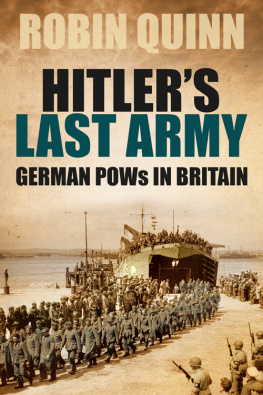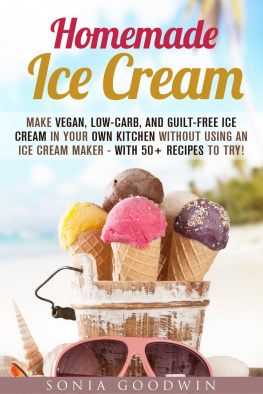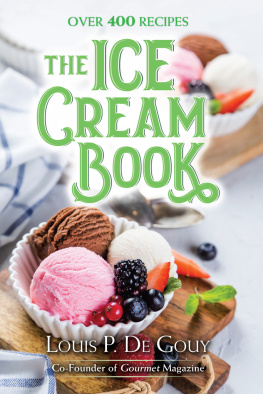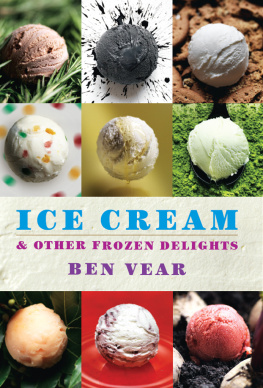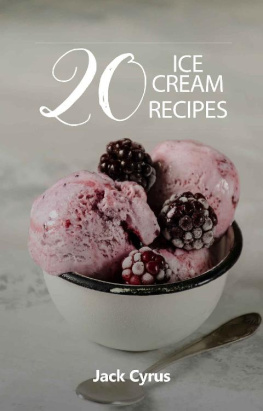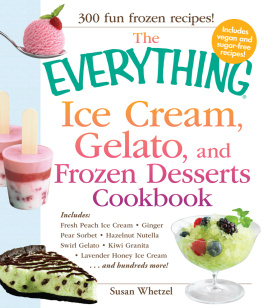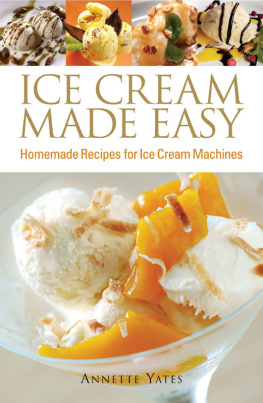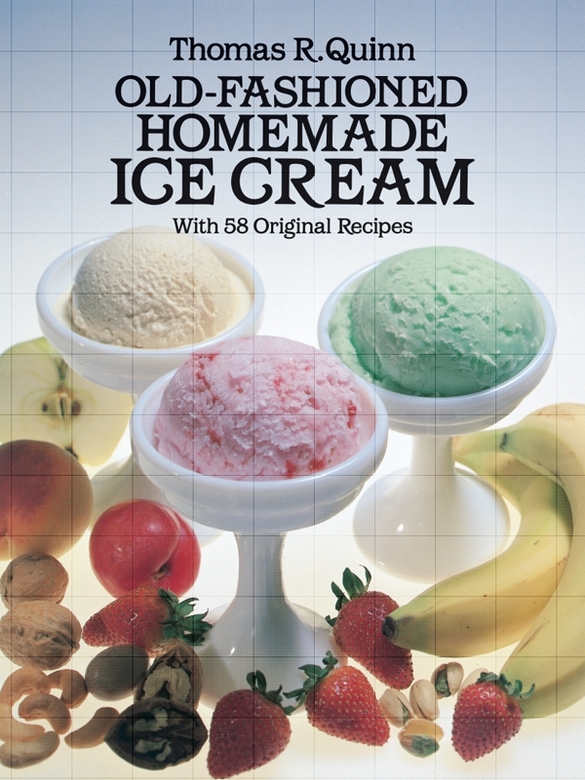The old saying, You get out only what you put in, holds true for ice cream. The better the ingredients, the better the ice cream. Making good homemade ice cream is not inexpensive, but using inferior ingredients only leads to disappointment and wasted effort.
Milk and Milk Products
Milk and its products are the basic ingredients of ice cream. All recipes in this book utilize milk in various forms and quantities.
Milk, as it comes from the cow, with all the natural milk fats left in, is called whole milk. Whole milk purchased at the grocery store contains not less than 3.25% milk fat.
Milk fat or butterfat, as it is sometimes called, is the most important component of ice cream. Ice cream gets its rich, creamy flavor from milk fats. Fat also contributes to producing a smooth texture and a greater resistance to melting.
A milk-fat content between 14% and 22% is ideal for producing a rich-tasting, full-bodied ice cream. Ice cream made with less than 14% milk fat is weak-bodied, coarse and icy. With a milk-fat content much greater than 22% the ice cream is too buttery tasting and doesnt expand during the freezing process, thus reducing the yield.
Two percent milk , as its name implies, contains 2% milk fats. If two percent milk is used to make ice cream, more cream must be added to raise the total milk-fat content to desirable levels.
Skim milk contains no milk fats, making it necessary to use large quantities of cream to provide the amount of milk fat needed for good ice cream.
Half-and-half is half whole milk and half cream. Although the milk-fat content of half-and-half varies, it is around 12% to 20%, making it ideal for use in ice cream. Half-and-half is usually less expensive than whole milk and heavy cream bought separately. Half-and-half may be used in place of equal parts of heavy cream and whole milk in any recipe in this book.
Heavy cream , or whipping cream as it is usually called, contains 30-40% milk fats. Ice cream made using heavy cream as its milk source has a buttery taste. It is best to mix cream and some other form of milk to reduce the fat content.
Coffee cream , sometimes called light cream, varies in milk-fat content from 18% to 30%. Using a mixture of one-third whole milk and two-thirds coffee cream makes a rich-tasting, full-bodied ice cream.
Evaporated milk is whole milk with approximately 60% of the water taken out. Usually vitamin D is added. Evaporated milk has the same food value as whole milk, but more than twice the milk-fat content (8%). Because of its processing, it has a noticeable cooked flavor and caramelized color that is undesirable in most ice creams.
Sweetened condensed milk is made by removing about half of the water from whole milk and adding sugar. This product contains 40-45% sugar and has a milk-fat content of not less than 8.5%.
Many ice cream recipes found in older cookbooks require heating the milk to near boiling. This was done to pasteurize the milk, thus killing bacteria and improving the keeping quality of milk products. All milk purchased in stores nowadays has already been pasteurized, so it is no longer necessary to heat milk to such high temperatures and risk burning or scorching. The ice cream mixture does need to be heated to moderate temperatures, 110-160, to cook the eggs, blend flavors and produce a more uniform product. A thermometer is useful for bringing the mixture to the right temperature.
Sugar and Sweeteners
How sweet it is depends on how much sugar or other sweetener is used. Good ice cream should contain 14-16% sugar. Depending on personal tastes, the sugar content can range from 12% to 29%.
The sugar content affects the smoothness and creamy flavor of ice cream. Too much sugar, and it becomes soggy and sticky, and more salt and ice are required to freeze it. Too little sugar, and ice cream tastes flat and can freeze very hard with little increase in volume. Flavor is also affected by the sugar content. A high sugar content overpowers the flavors of some fruits and other delicate flavors.
Eggs
Eggs give ice cream a rich-looking appearance and improve its flavor. The addition of eggs turns an average ice cream into a high-quality frozen dessert. Egg yolks improve the whipping ability of the ice cream mixture and produce a firmer-bodied product. They also contribute to a smooth texture and add a delicate flavor to ice cream. When cooked, eggs thicken the ice cream mixture and blend flavors.
NOTE: If eggs are not part of a given recipe, the mixture should be aged at least 24 hours in the refrigerator before freezing.
Rennet
Rennet is a thickening agent made from the enzyme rennin, found in the stomach lining of young cattle. Usually manufactured in tablet form, rennet is dissolved in water and added to the ice cream mixture 10 minutes before freezing. The mixture should be stirred only slightly after the rennet is added, because continued agitation will not allow the mixture to coagulate properly.
Ice cream with rennet added will be slightly firmer and have a smoother texture. Rennet is especially helpful if the milk-fat content of the ice cream is low, or if eggs are not used in the recipe. Rennet tablets can be found in the gelatin sections of most food stores.





